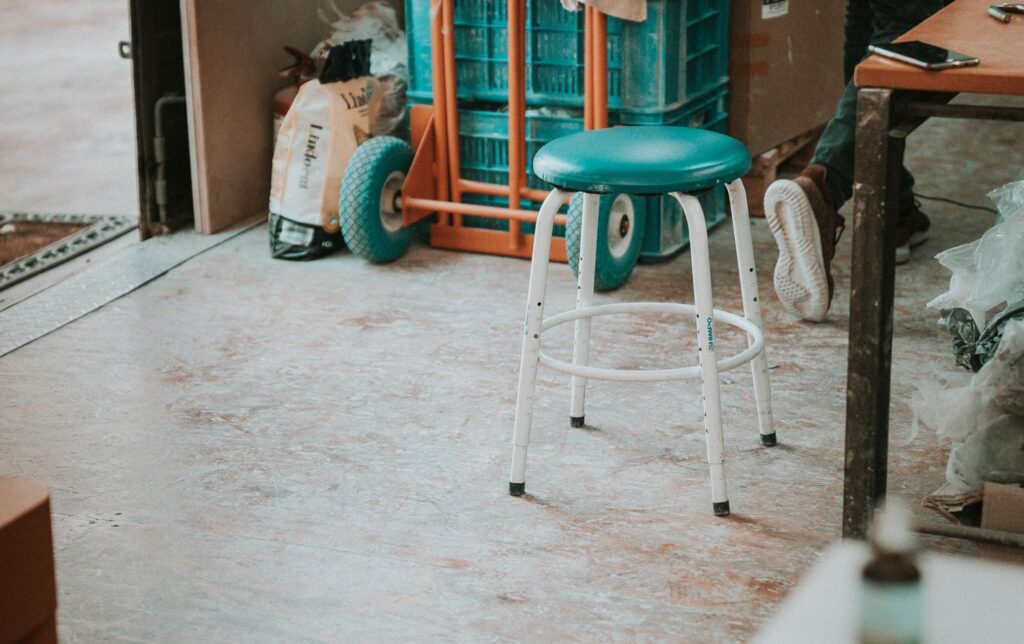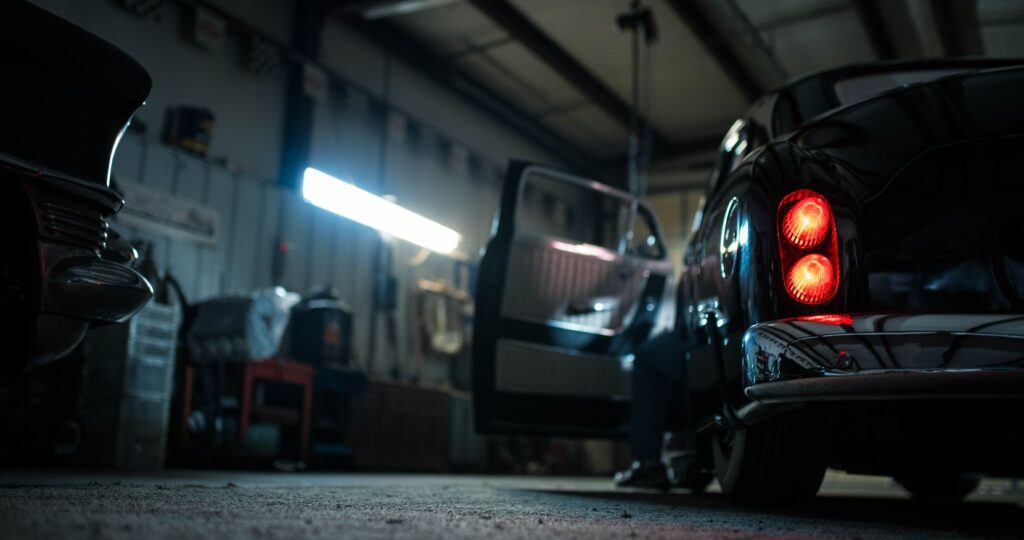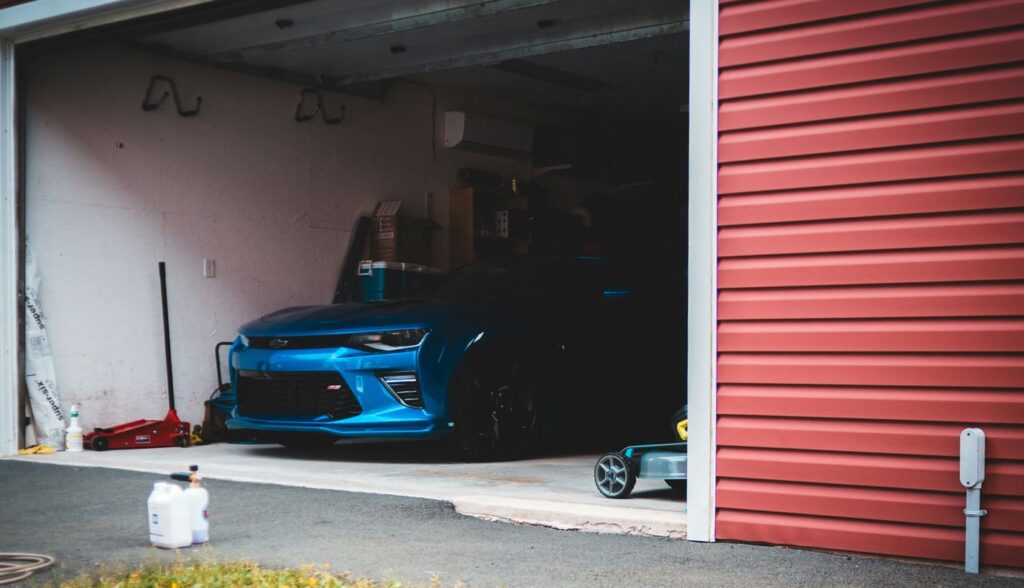The garage is often forgotten when people are working on their homes. However, updating your garage floors can make a big difference in how it looks and how well it works.
Even though it’s probably not at the very top of your to-do list, modernising the concrete surface in the garage is something you should absolutely do for a few important reasons. Updating the garage’s flooring surface will make this part of the house feel cosier, make the garage more useful, and increase its value.
This in-depth guide will discuss the most important parts of improving your garage flooring.
Important Reasons to Get a New Garage Floor
Because most of us only think of garages as places to park our cars, it’s easy to forget that the floor of your garage is an important part of your home. But in the real world, this is a useful space that could be used for many other things, like storage during the off-season, a place to work on crafts or projects, a place to store supplies for the glasshouse, or even a gym.
It’s also a noticeable part of everyday life—the last thing you see before you leave in the morning and the first thing you see when you get home at night. It makes sense to pay attention to it.
And finally, a strong and nice-looking floor makes your living space bigger by transforming your garage into a real room that you can use for your cars.
Signals It’s Time to Replace the Garage Floor
How does one know when it’s time to make a change? Keep an eye out for these clear signs that your garage floor needs to be updated right away:
Stains
If you’ve noticed stains on the garage floor that won’t come out with regular cleaning, consider upgrading your floor. Tough stains are ground down before epoxy resin and polyaspartic finishes are put on. The coatings themselves are also resistant to stains, which will help you protect the floor from oil stains, chemical leaks, and other harmful things in the future.
Shrinkage Cracks
If the floor in your garage has cracks from shrinkage, performing an upgrade that involves repairs and a safety coating might be suitable. When cracks appear, water can leak through and weaken the base of your garage. This can lead to more damage. If you see settlement cracks, you should get your foundation fixed.
Aesthetic
New epoxy and polyaspartic floors might be the best choice when you want to make your garage look better. As well as making your home look better, replacing the previous floors can help raise its value.
Safety Hazards
Your family could be in danger if your garage floor isn’t handled. If that’s the case, it might be time to get a better job.
Pitting and Spalling
If the top layer of concrete breaks off, it can leave small holes or craters in your garage floor. This is called pitting and spalling. Heavy trucks, chemicals, or normal wear and tear can all do this kind of damage. If you see this damage, it might be time to get a new one.
However, there are other reasons a better, more protective floor coating might be a good idea. You should also improve your space, which is always a good idea.
Why Upgrade Your Garage Floors
The truth is that most garage floors look pretty bad. It’s made of concrete and has a lot of dust and maybe oil or paint stains. You may only want to spend a little time and money on improving your garage floor because other things need your attention. If you still think it needs to be more important, here are some solid explanations why it should be.
Upgraded Garage Floors Handle Grease, Oils, and Irritants Better.
A better garage floor makes the space more enjoyable and more durable, so it can handle spills, leaking, and the everyday use and abuse that happens in the room much better.
If you put a new coating on your garage floor, it will be easier to clean up spills that could be slippery, and the staining will rarely happen. After a long time of use, concrete floors look like battlegrounds. Other types of flooring, on the other hand, are much better at handling the wear and tear of daily life.
A flooring option other than concrete that can be used in the garage is long-lasting and can handle damaging substances. Oils and additional leaks are easy to fix, and ultraviolet (UV) rays from the sun, powerful impacts from objects or tools, and many other things that can damage surfaces over time have much less effect on epoxy flooring or additional long-lasting surface options.
Create a Dust-Free Environment
A lot of the time, extra dust builds up on the garage floor. It could be because of how the cement was put together, changes in the weather, or just time. What if the garage floor didn’t have to be that way? Putting down floor tiles or a smooth resin coating on top can cut down on the dust that comes through while making the space much nicer.
Garage Upgrades Improve Sustainability
Because concrete is porous, spills that could be harmful can eventually seep into the ground below the house if they are not cleaned up right away. Along with the solvents and chemicals that are often kept in the garage, surfaces can have VOCs or volatile organic compounds that release chemicals and vapours into the air that could be harmful.
Both of these issues are taken into account when you upgrade your flooring. You can make the seal between the floors of your utility space better and lower the amount of VOCs in the room. This is good for your health and helps make the area where you live greener. Getting a new garage floor is good for everyone.
Easy to Clean
Pick a floor covering that is simple to clean. For the floor to look good, you’ll need to clean it if you park the vehicle in the garage or give in dirty bikes. That being said, you can put down a floor that is simple to clean and doesn’t need a full-on pressure washer.
Add a Resilient and Durable Solution
Most concrete floors last for decades but must be fixed and maintained, particularly if you use a garage for large equipment or as a workshop.
You need something that will only wear down slowly and is simple to clean, so you don’t need as much maintenance. Garage floor painting could be used, but it would need to be reapplied often, and once it starts to peel and flake, it can look not good.
FAQs About Garage Floor
Can I upgrade my garage flooring myself?
Yes, the homeowner can install a wide variety of garage flooring options. On the other hand, it is strongly recommended that you employ a professional for any extensive repairs or installations that are particularly difficult.
How long does it take to upgrade garage flooring?
The time it takes to complete is contingent on the kind of flooring you have as well as the dimensions of your garage. Epoxy coatings and interlocking tiles can take a day to several days to fully cure after application.
Are there eco-friendly garage flooring options?
Some flooring materials, such as recycled rubber tiles or low-VOC epoxy coatings, qualify as environmentally friendly.
Will upgrading my garage flooring increase my home’s resale value?
Yes, a garage that is kept in good condition and has been updated with flooring can increase the value of your property.
Can I upgrade my garage flooring in the winter?
Although possible, doing so will be difficult due to the high temperature and high humidity levels. Spring or fall would be more appropriate.
Repairing vs. Replacing
It may be easier to get a new one when something breaks. But to save time and money, think about a simple garage repair. For instance, if you went to your garage and saw some small stains or damage to the concrete’s surface that doesn’t affect any structural damage, you might decide that replacing it all is unnecessary.
Instead, it might make more sense to spend less on a minor repair that will take less time and cost less. Putting a mat or rubber rug onto the messy area could help for now.
Otherwise, if you notice a bigger problem with the garage floor that a mat or rubber material rug couldn’t fix, it’s time to get a professional to look at it and set up a replacement.
Types of Garage Floor Coverings
Coatings and coverings are the two main things that they do. You can choose either if the garage floor is in good shape. If your garage floor has a lot of cracks or other flaws, though, a covering will do because it hides the damage. Flaws tend to stand out more when you use a coating, even one with a low sheen.
Water can’t damage coverings, which can peel off coatings.
Garage Floor Coverings
Coverings come in tiles that fit together and mats that roll out. The speed and ease of use are the best things about them. In one morning, you can cover the ground of a three-car garage. All that needs to be done before starting is a good, thorough vacuuming or sweeping.
Coverings can make a bad floor look brand new because they can cover up cracks and holes and go over the wet concrete. The bad thing is the price. Coverings are often four times more expensive than coatings.
Garage Floor Coatings
Floor paints, epoxy-based paint, stains, and sealers are all coatings. If you do the work yourself, coatings usually cost less than coverings. They keep stains, chemicals that break down things (like road salts), and water from getting in. Two things, though, can cause coatings to fail: wet concrete and insufficient floor prep.
Coatings can’t be used if groundwater rises through the concrete and keeps it damp constantly. The coating doesn’t stick to the concrete because it’s wet and quickly peels off chips and flakes. That’s why checking for water on your concrete slab before you coat it is important.
The main bad thing? Coatings need the floor to be carefully prepared for several hours.
Depending upon how dirty or oily the floor is, this may include using a pressure washer to clean it very well and using chemicals or degreasers to remove any sealers, grease, or old coatings. Fix any holes, cracks, or other issues on the surface of the concrete. Then, use muriatic acid to etch it so it is clean and easy to drill through.
Review sites can help you choose the most suitable garage floor painting.
Conclusion
Upgrading your garage flooring is crucial for several reasons. It makes the space feel cosier, more useful, and increases its value. Garage floors are not only used for parking cars but also for storage, crafts, and projects. They also make your living space bigger by transforming the garage into a real room for cars.
Signals to replace your garage floor include stains, shrinkage cracks, aesthetics, safety hazards, and pitting and spalling. Tough stains are ground down before epoxy resin and polyaspartic finishes are applied, protecting the floor from oil stains, chemical leaks, and other harmful substances. If cracks appear due to shrinkage, repairs and a safety coating might be suitable.
Upgrading garage floors also helps handle grease, oils, and irritants better, making the space more enjoyable and durable. New coatings make it easier to clean spills and staining less likely. Concrete floors can look like battlegrounds after a long time, but other types of flooring are better at handling daily wear and tear. Epoxy flooring or other long-lasting surfaces can handle damaging substances, while UV rays and powerful impacts from objects or tools have less effect on epoxy flooring.
Garage floor upgrades can improve sustainability by reducing dust buildup, enhancing the seal between floors, and reducing VOCs, which can be harmful to the environment. Choosing a simple to clean floor covering can make the space look nicer and prevent spills. A resilient and durable solution is essential for garage floors, especially for large equipment or workshops. Garage floor painting can be used, but it requires frequent reapplying and can peel and flake.
Repairing garage floors can save time and money by addressing minor issues before replacing the entire floor. Coverings, such as tiles or mats, can cover up cracks and holes, but are often more expensive than coatings. Coatings, such as floor paints, epoxy-based paint, stains, and sealers, are cheaper and can prevent stains, chemicals, and water from getting in. However, they can fail if groundwater rises through the concrete and keeps it damp, making it difficult to apply.
Coatings require careful floor preparation, which may involve using a pressure washer, chemicals, or degreasers to remove sealers, grease, or old coatings. Fixing holes, cracks, or other issues on the surface can also help. Review sites can help choose the most suitable garage floor painting.
Content Summary
- The garage often goes overlooked during home renovations.
- Upgrading garage floors enhances aesthetics and functionality.
- Modernising the garage’s concrete surface has several benefits.
- A new garage floor adds value to your home.
- The garage can serve multiple purposes beyond parking cars.
- An appealing garage floor improves daily life experiences.
- Garage flooring can make the space more versatile.
- Signs indicating the need for a new garage floor include stains.
- Ground-in stains suggest considering an upgrade.
- Shrinkage cracks can lead to further damage.
- Aesthetic considerations play a part in floor upgrading decisions.
- Safety hazards from poor flooring warrant an upgrade.
- Pitting and spalling indicate wear and tear.
- Upgraded floors handle common garage irritants better.
- Advanced floor types resist staining.
- Epoxy flooring combats daily wear and tear effectively.
- A dust-free garage environment enhances usability.
- Improved flooring enhances sustainability and eco-friendliness.
- Upgraded garage floors are easier to clean.
- Modern flooring solutions are more resilient and long-lasting.
- Painting garage floors may require frequent reapplication.
- Minor damages might only need repairs rather than full replacement.
- Major flaws necessitate professional assessment.
- Garage floor coverings hide damages and imperfections.
- Coatings emphasise any floor imperfections.
- Floor coverings are more resistant to water damage.
- Coverings include interlocking tiles and roll-out mats.
- Coverings can transform a poor floor rapidly.
- The downside to coverings is often their cost.
- Garage floor coatings include paints, epoxy, stains, and sealers.
- Coatings generally cost less than coverings.
- Wet concrete can prevent coatings from adhering properly.
- Proper floor preparation is crucial for coatings.
- The process might require pressure washing and chemical treatments.
- Review sites can guide in selecting appropriate garage floor paints.
- Garage floors interact with our daily routines.
- Upgraded flooring enhances the usability of the garage.
- Many overlook the potential of their garage space.
- Regular cleaning can’t always remove tough stains.
- Water infiltration can compromise the garage’s base.
- An aesthetically pleasing garage boosts home value.
- Dangers on the garage floor can pose safety risks.
- Heavy usage can cause pitting and spalling.
- Floor upgrades improve storage conditions for chemicals.
- Modern flooring cuts down on harmful dust accumulation.
- Upgrades can seal potential leak paths in the flooring.
- Garage improvements contribute to environmental sustainability.
- Investing in the garage floor simplifies maintenance.
- Choosing between repairing or replacing depends on the damage extent.
- Garage floors can either be covered or coated based on preference.



